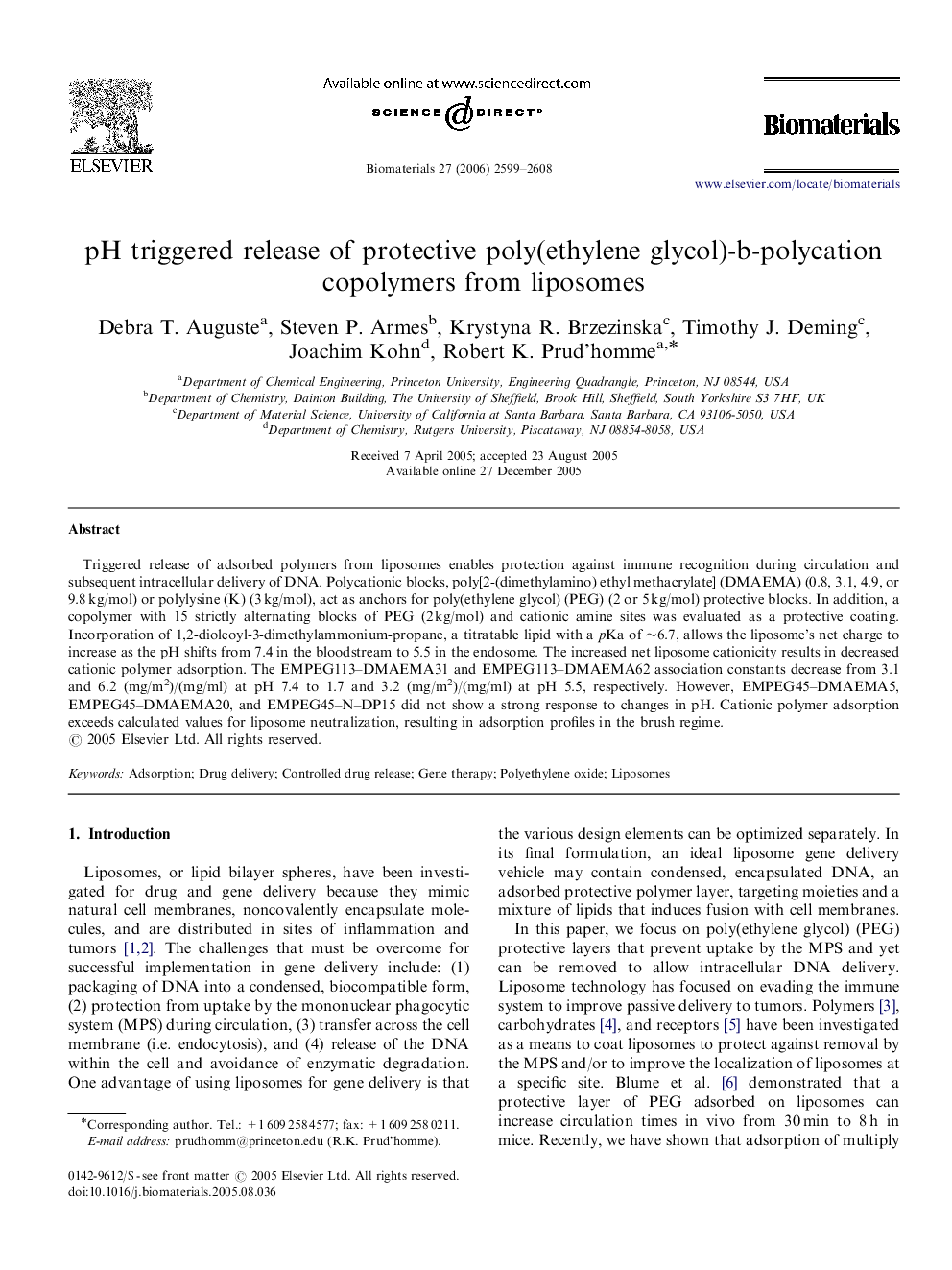| کد مقاله | کد نشریه | سال انتشار | مقاله انگلیسی | نسخه تمام متن |
|---|---|---|---|---|
| 12106 | 778 | 2006 | 10 صفحه PDF | دانلود رایگان |

Triggered release of adsorbed polymers from liposomes enables protection against immune recognition during circulation and subsequent intracellular delivery of DNA. Polycationic blocks, poly[2-(dimethylamino) ethyl methacrylate] (DMAEMA) (0.8, 3.1, 4.9, or 9.8 kg/mol) or polylysine (K) (3 kg/mol), act as anchors for poly(ethylene glycol) (PEG) (2 or 5 kg/mol) protective blocks. In addition, a copolymer with 15 strictly alternating blocks of PEG (2 kg/mol) and cationic amine sites was evaluated as a protective coating. Incorporation of 1,2-dioleoyl-3-dimethylammonium-propane, a titratable lipid with a pKa of ∼6.7, allows the liposome's net charge to increase as the pH shifts from 7.4 in the bloodstream to 5.5 in the endosome. The increased net liposome cationicity results in decreased cationic polymer adsorption. The EMPEG113–DMAEMA31 and EMPEG113–DMAEMA62 association constants decrease from 3.1 and 6.2 (mg/m2)/(mg/ml) at pH 7.4 to 1.7 and 3.2 (mg/m2)/(mg/ml) at pH 5.5, respectively. However, EMPEG45–DMAEMA5, EMPEG45–DMAEMA20, and EMPEG45–N–DP15 did not show a strong response to changes in pH. Cationic polymer adsorption exceeds calculated values for liposome neutralization, resulting in adsorption profiles in the brush regime.
Journal: Biomaterials - Volume 27, Issue 12, April 2006, Pages 2599–2608